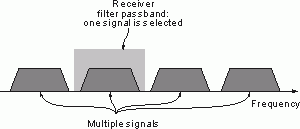A new standard for 60GHz Wi-Fi goes beyond 802.11ad wireless speed & range
A new standard for high speed multi-gigabit WiFi is emerging. Though products based on the IEEE 802.11ad (WiGig) standard have really only begun rolling out, an effort to deliver an enhancement called IEEE 802.11ay that promises to deliver faster and longer range Wi-Fi networks is gaining steam.
The up-coming 802.11ay is as an enhancement of 802.11ad in the unlicensed 60 GHz millimeter wave band of spectrum, and should be a natural upgrade. The upgrade will offer significant speed and range improvements.

Technical Summary
802.11ay is a type of WLAN in the IEEE 802.11 set of WLANs. It will have a frequency of 60 GHz, a transmission rate of 20–40 Gbit/s and an extended transmission distance of 300–500 meters. It has also been noted that it is likely to have mechanisms for channel bonding and MU-MIMO technologies. It is expected to be released in 2017. 802.11ay will not be a new type of WLAN in the IEEE 802.11 set, but will simply be an improvement on 802.11ad.
Where 802.11ad uses a maximum of 2.16 GHz bandwidth, 802.11ay bonds four of those channels together for a maximum bandwidth of 8.64 GHz. MIMO is also added with a maximum of 4 streams. The link-rate per stream is 44Gbit/s, with four streams this goes up to 176Gbit/s. Higher order modulation is also added, probably up to 256-QAM. 802.11ay applications could include replacement for Ethernet and other cables within offices or homes, and provide backhaul connectivity outside for service providers.
What is the difference between ad and ay?
The 802.11ad standard was published in 2012 and the technology gives devices access to the unlicensed and relatively unclogged 60 GHz millimeter wave spectrum band for multimedia streaming, VR headset connectivity, computer-to-monitor wireless links and other apps that don’t require more than say 30 or 40 feet of unimpeded space. It has been adopted by chipmakers as well as vendors of routers, access points and other devices. The Wi-Fi Alliance runs a WiGig certification program for vendors, and the early 11ad gear on the market most commonly supports data transfer rates of 4.6Gbps – way faster than 802.11n and 11ac, but more limited in range and unable to penetrate solid objects.
The backwards compatible 802.11ay amendment to 802.11ad is designed to boost speeds several-fold. That initially would amount to a transmission rate of 20 to 30Gbps and a range of 33 to 100 feet with 11ay-to-11ay device setups, but once channel bonding, MIMO and other capabilities are exploited, you could be getting closer to 200Gbps and reaching distances approaching 1,000 feet, according to industry players.
11ay, as the specs are being developed, “is really allowing for a wider range of products than you’d get with ad, which has one set of data rates that everyone supports… ay has a lot more parameters to play with in channel bonding, MIMO and features at the MAC level to allow a far greater range of performance and products” according to one chipset vendor.
Other up-coming Fast WiFi standards: 802.11ax

Users should not confuse 802.11ay with 802.11ax, which will work in the 2.5 and 5 GHz bands. The lower frequency bands for 11ax will penetrate walls. 11ay will not.
What will 802.11ay be used for?
It remains to be seen how soon the high speeds of 11ay will really be needed for internal uses, as 802.11ac — including Wave 2 products — are already pretty robust. But experts say that if 11ad doesn’t quite do it for you given its distance limitations, “11ay will finally be the technology that would let you snip that Ethernet cord – you no longer have to run Ethernet cables to everyone’s desk… there’s enough wireless bandwidth in ay.”
Many are enthusiastic about 802.1ay’s potential as a fixed point-to-point or point-to-multipoint outdoor backhaul technology, especially in light of scaled back fiber rollout plans by providers like Google and Verizon in the face of extraordinary costs associated with such implementations. “I’m more bullish on using ad & ay for backhaul (instead of mesh) in the case of campus & city networks — provided that it has a useful range” according to one industry expert
But it’s possible that 802.11ay could find a role in internal mesh and backbone networks as well as for other uses such as providing connectivity to VR headsets, supporting server backups and handling cloud applications that require low latency. “I believe that eventually, there will be enterprise applications for this – but it’s probably a few years into the future, given that we will have 802.11ax fairly soon & because there’s still a lot of 5 GHz band available for that (and ac).
When will 802.11ay become reality?
The 802.11ay task group had its initial meeting in 2015 and the spec only hit the Draft 0.1 stage in January. Though it is expected to reach Draft 1.0 by July 2017, according to the IEEE task group. If that mark is hit, expect pre-standard 11ay products to start rolling out within a year of that time.
Who is behind 802.11ay?
The IEEE task force leading the 11ay work includes representatives from major equipment and chipsets vendors. The group states its goal as this: “Task Group ay is expected to develop an amendment that defines standardized modifications to both the IEEE 802.11 physical layers (PHY) and the IEEE 802,11 medium access control layer (MAC) that enables at least one mode of operation capable of supporting a maximum throughput of at least 20 gigabits per second (measured at the MAC data service access point), while maintaining or improving the power efficiency per station. This amendment also defines operations for license-exempt bands above 45 GHz while ensuring backward compatibility and coexistence with legacy directional multi-gigabit stations (defined by IEEE 802.11ad-2012 amendment) operating in the same band.”
For Further Information
Please Contact Us









